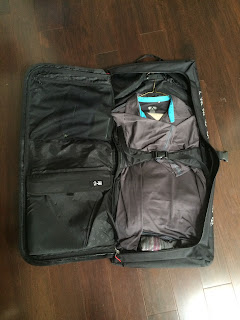Now let me be clear, I am basing this entirely on what is publicly available in the news. I have not interviewed anyone, nor do I intend to. And I fully accept that some media sources have a tendency to make stories more dramatic than they really are.
However, accord to this Richmond News article, the City of Richmond was considering banning cyclists from River Road altogether. Here are a couple of letters to the editor condemning this consideration: November 16 from Graham Taylor, November 17 from George Muenz. I was truly shocked that the City of Richmond would even consider this as a possible solution.
I was relieved this morning to read this November 17 letter to the editor from Coun. Ken Johnston in which he clarifies that he had no intention of banning cyclists and that the use of the word may have been inappropriate and misleading. Ken Johnston writes the following:
"My intent was to have staff investigate all options for cyclists, including use of a safer alternative route, if one exists. My request was intended to generate more information on cycling use of River Road. In retrospect, my use of the word “banning” in the motion was ill advised, as it has detracted from the important direction of the committee’s motion. But at no time did I say I wanted cyclists banned from River Road."With that in mind, that the City does not in fact intend to ban cyclists from River Road, I still want to state my position on this topic.
First, whether a city is or is not invested in building safe infrastructure for bicycles, are rural farm roads not precisely the place that the city would want cyclists to be riding? River Road, for example, is a non-arterial, quiet, residential street that runs along the river. It is outside of the city core and, therefore, out of the way. It bends and curves so most vehicular traffic should be at a moderate speed anyway. Further, aside from the few businesses in the area, most vehicular traffic is local residents. The only exception here is the odd speedy motorist looking to skip heavy traffic along Westminster Hwy or Highway 91.
So banning bicycles from the road altogether seems counter-intuitive to me. How about installing rolling speed bumps to limit speeders, similar to the ones along 0 Ave? Or how about adding more bollards to keep impatient motorists in their own lanes? Or, even better, how about adding a mixed-use (pedestrian and bicycle) trail along the mostly unused waterfront?
Just for arguments sake, let's have this same discussion about vehicles but replace the word vehicle with samurai sword. This may sound like a ridiculous analogy, but allow me to start things off:
In Richmond, we have a lot of people that depend on their samurai swords. However, we also have a growing number of people that have decided to leave their samurai swords at home and go without one. This growing number of people believe that life is better without a samurai sword. Some just for recreation, others as a way of life, and others yet are simply not able to carry a samurai sword any more.
Most people are very responsible with their samurai swords. But some are not. Inevitably, every once in a while, someone gets reckless or careless with their samurai sword and someone dies as a result.
But we always consider it an accident, of course. Sometimes it is an "out of control samurai sword," and other times people die as a result of a "mechanical malfunction" with the samurai sword.
In order to prevent more deaths, to prevent more people from dying by samurai swords, we will ban the individuals that leave home without a samurai sword. Everyone must now have a samurai sword. That is how we will prevent more people from dying by a samurai sword.If any municipality or city actually considers banning cyclists from a stretch of road to prevent tragedies, then I strongly believe that they have their priorities backwards. Earlier in the year I wrote about changes needed to Richmond's bicycle infrastructure (click here to read that post). Along with changes to infrastructure, Richmond also needs to prioritize vulnerable road users (pedestrians, bicycle riders, etc.) in all areas of our city. Motorists also need to be held accountable for their actions (as far as I am aware, no charges have been laid against the driver in the November 6th tragedy). We need to stop calling these tragedies accidents. And the media needs to stop using language that removes the blame from the motorists and places it on the vehicle or the victim.






















